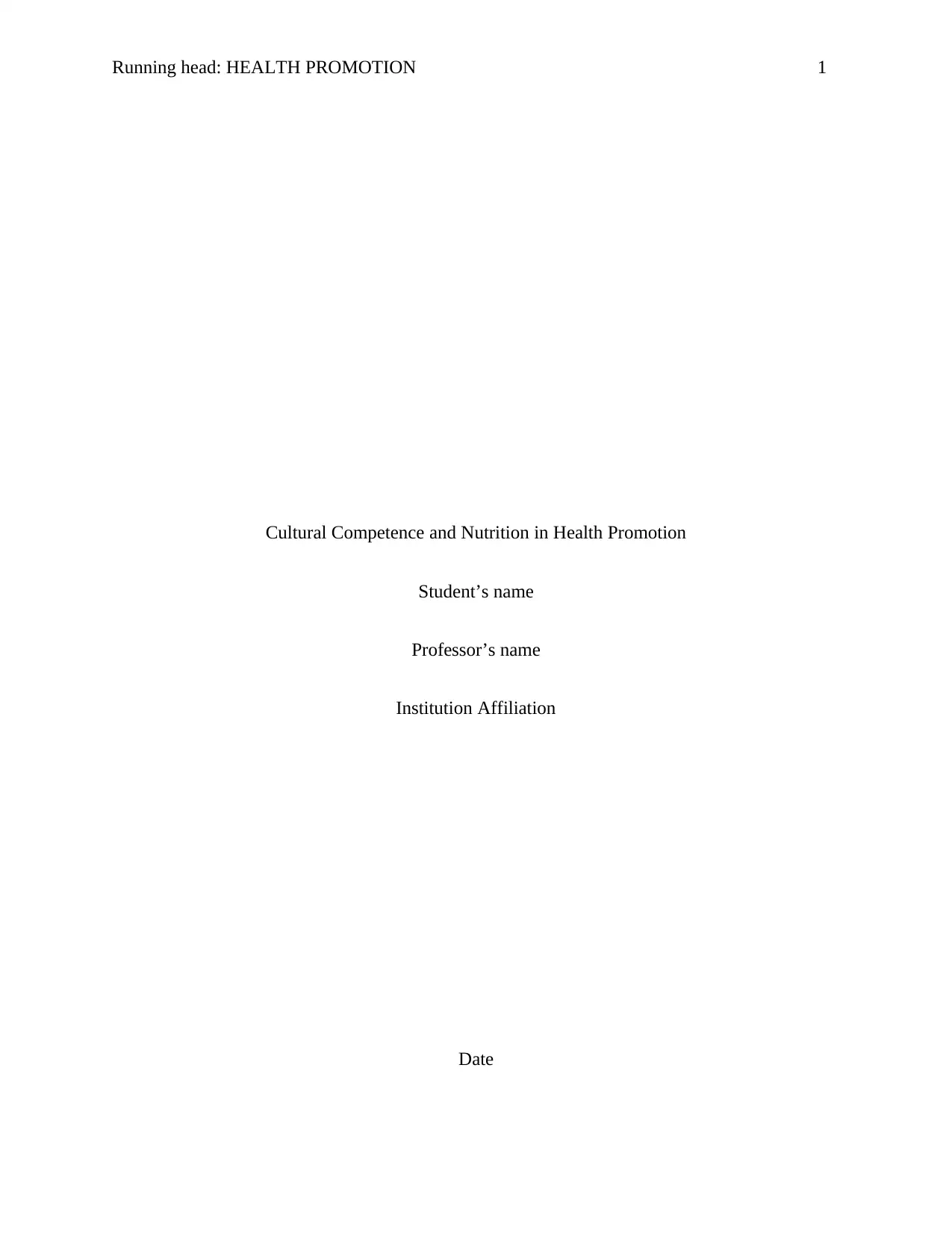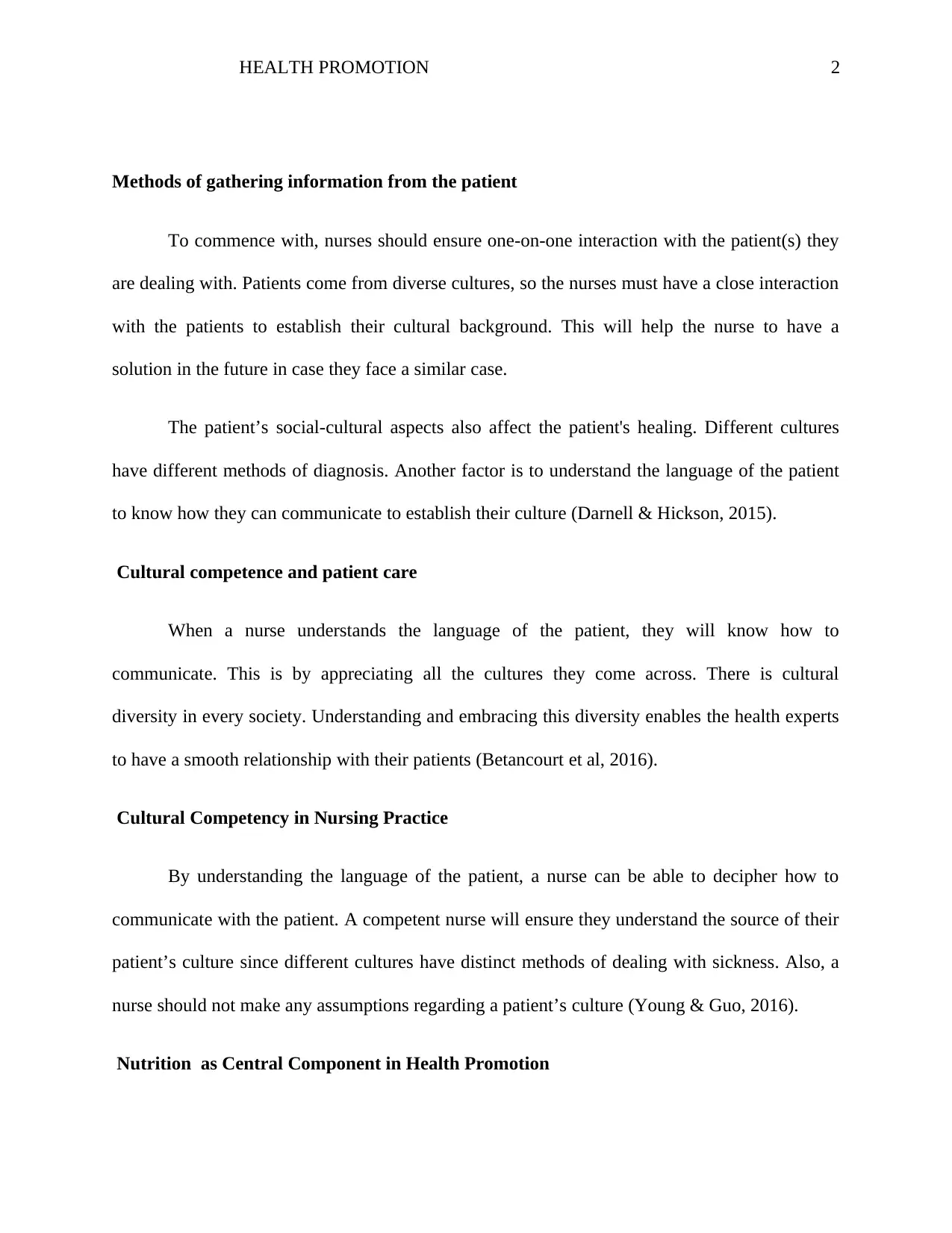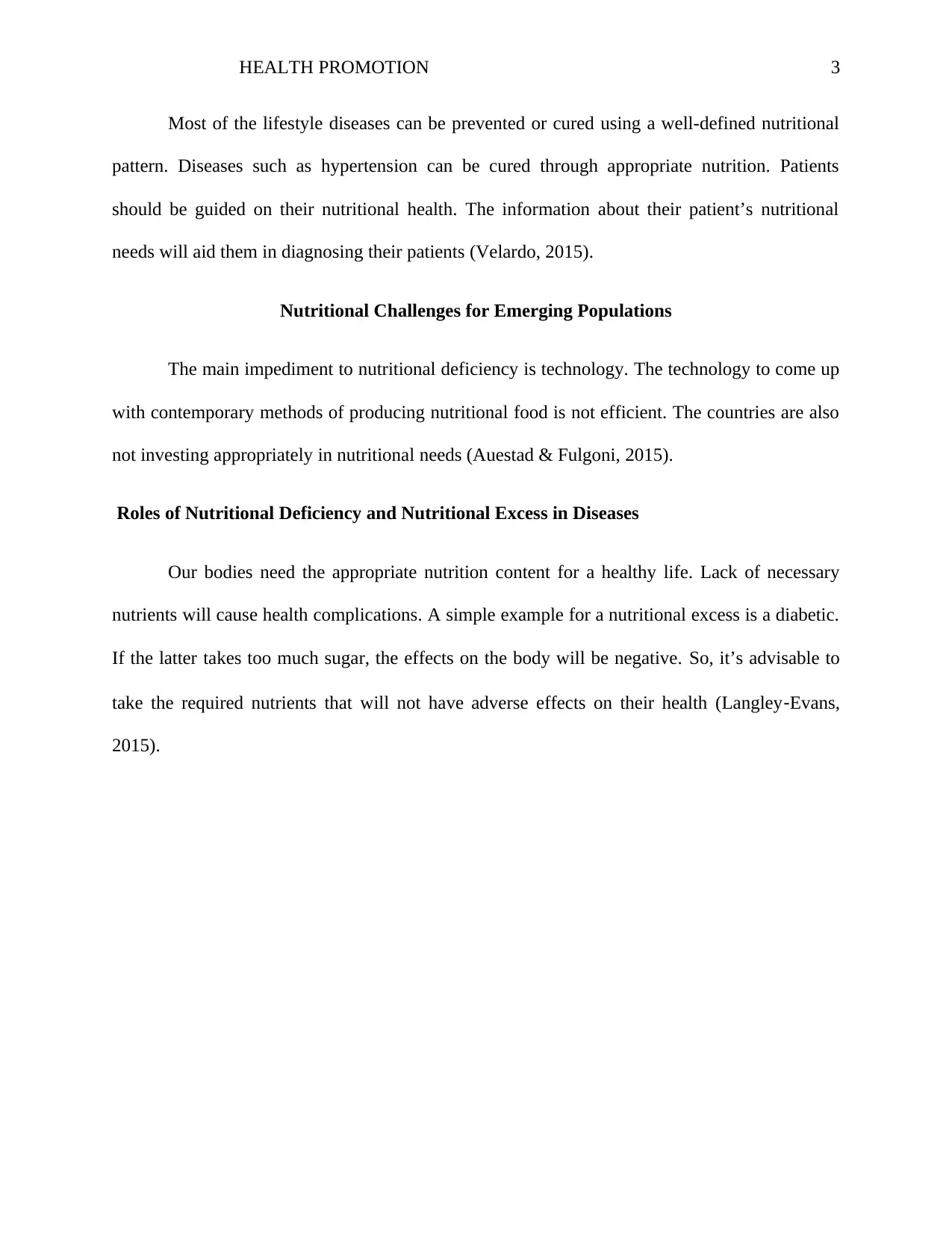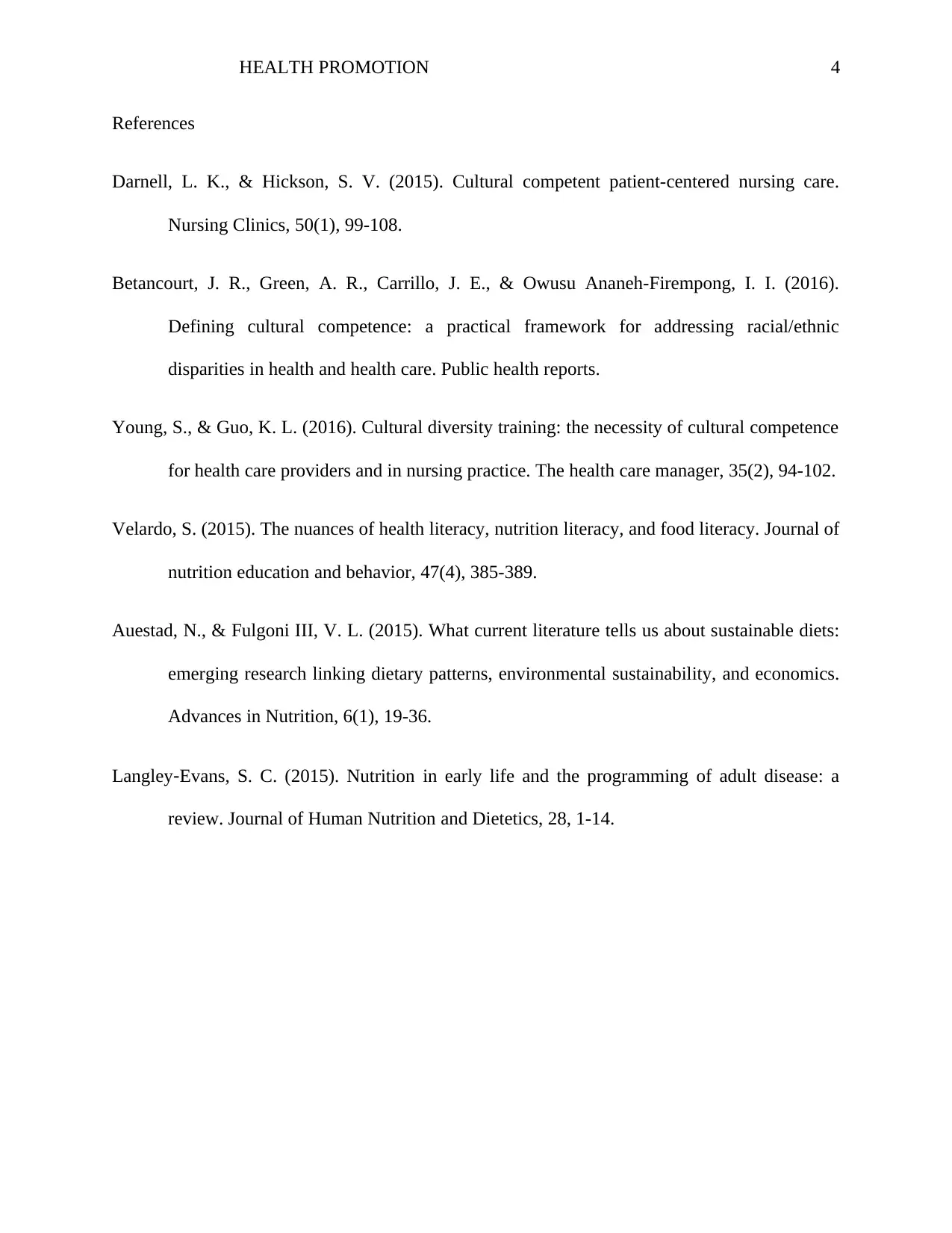Health Promotion Report: Cultural Competence and Nutritional Aspects
VerifiedAdded on 2022/09/28
|4
|719
|23
Report
AI Summary
This report delves into the critical intersection of cultural competence and nutrition within the realm of health promotion. It emphasizes the importance of nurses establishing one-on-one interactions with patients to understand their cultural backgrounds, recognizing that cultural and social aspects significantly influence patient healing and communication. The report highlights cultural diversity and its impact on patient care, advocating for the appreciation of diverse cultures to foster effective patient-provider relationships. It also examines nutrition as a central component of health promotion, emphasizing its role in preventing and curing lifestyle diseases. The report further addresses nutritional challenges faced by emerging populations, highlighting the impact of technology and investment in nutritional needs, while also exploring the roles of nutritional deficiencies and excesses in various diseases. The report concludes by underscoring the significance of balanced nutrition for overall health and well-being.
1 out of 4











![[object Object]](/_next/static/media/star-bottom.7253800d.svg)